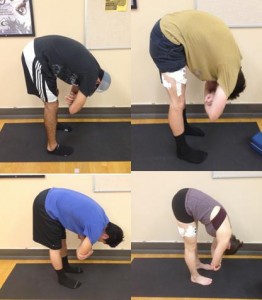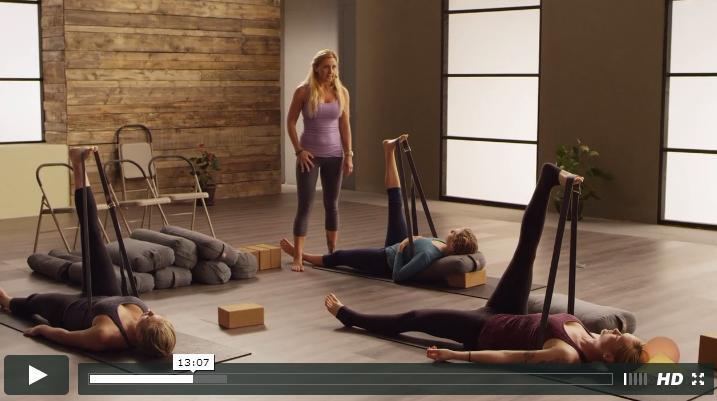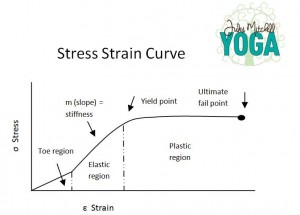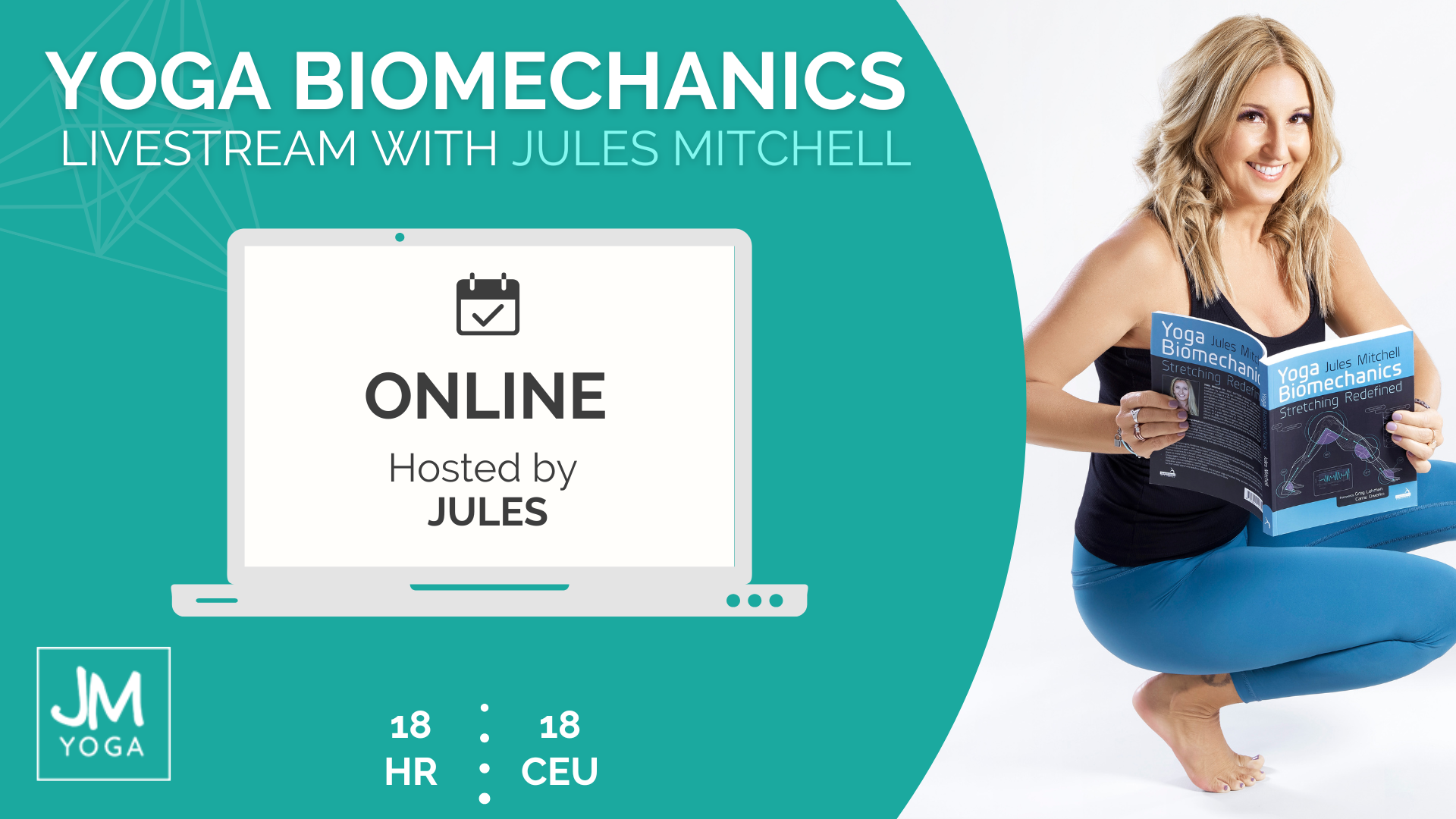Your hamstrings aren’t short, they are low in extensibility.
There. I said it.
What I’d really like to do now is run and hide, since the questions and discussions on social media will likely overwhelm my schedule. I mean, I’ve already led you to question think critically about some of our other favorite words to describe those inextensible hamstrings – “tight” and “stiff” – now I’m adding “short” to the list. What gives?
Since I have an obligation to explain, I will. Then I will run and hide, in Bulgaria actually, where we will be filming more yoga classes for Udaya.com. (I know, I know, why Bulgaria?)
About those hamstrings. Your hamstring length is your hamstring length – determined by the distance between your attachment points. Sort of. I don’t even want to tell you this, but those proximal attachment points don’t neatly converge only at the ischial tuberosities, like your yoga anatomy books depict. They also converge with surrounding tissues.
For example, the tendon of the long head of the biceps femoris is continuous with the sacrotuberous ligament, which is continuous with ischium, which are continuous with all the other neighboring musculoskeletal structures. [1,2]. Where do those hamstrings actually begin? How do you measure the length of something that does not have a clear beginning and end? That would be like trying to measure the length of a Möbius strip. You would have to pick a random point A and point B to measure. Which is a lot like what goes on during a cadaver dissection. But let’s not go down that rabbit hole.
Unfortunately, much of the research uses the term “hamstring muscle length” (HML) to describe how well someone can stretch. They don’t actually go inside a human thigh and measure anything from distance A (ischial tuberosities) to distance B (tibia and/or fibula) – because bone, not soft tissue, would need to grow longitudinally in order for those points to change. Improvements in HML after a stretching protocol are a measure of increased flexibility, not changes between distance A and distance B during rest. Using the term “length” falsely suggests that the inflexible have “short” hamstrings.
Did the “attachment points” actually change as a result of stretching or not stretching? No.
The elasticity of those hamstrings is the real factor to consider. Otherwise said, hamstring flexibility is determined by the degree of extensibility. Not actual length.
Remember the stress strain curve? Elastic tissues under a tensile load respond by temporarily elongating and then return to their resting length when the load is removed. Hamstrings that don’t elongate, do not yield well under the tensile load (refer to the linear portion of the curve). The factors that contribute to unyielding hamstrings are topics I’ve discussed in previous blogs and will continue to write about it future blogs.
When stretched, the hamstrings are not actually permanently lengthening. Yes, the proportion of muscle tissue (organized in sarcomeres) to connective tissue (fascia, tendons, etc.) may vary, but the overall length of the muscle organ (which includes both muscle and connective tissue) does not change.
The notion that not stretching those hamstrings adaptively shortens them, or conversely, that stretching hamstrings adaptively lengthens them, is a common theme across many movement modalities, not just yoga. The explanation I see/hear most often goes something like this:
- Hamstrings get short if you don’t stretch them
- Said short hamstrings pull on the attachment points, pulling the ischia down (inferiorly).
- Pelvis gets tucked (tilted posteriorly).
- Lumbar curve flattens.
- Back pain ensues…except lumbar curve is not correlated with pain [3].
- Go to yoga, stretch your hamstrings.
- Lumbar curve returns…except stretching your hamstrings is not correlated with changes in lumbar curve [4].
- Back pain goes away.
Except that model has to many statements that begin with “except” for me to be convinced.
If you consider those hamstrings to be lower in extensibility, rather than short, the evidence may convince you to still to stretch the hamstrings, just not with the intention make them longer, but to improve their capacity to tolerate a stretch.
In my opinion, it’s really a matter of movement rather than static positioning (the capacity to yield under load rather than the resting length of the tissues). When squatting or stooping, if the hamstrings don’t yield well, something else will. Like the spine. Exactly how and where the spine will compensate will vary among individuals (image below). Stretching your hamstrings (thereby improving extensibility), however, has been shown to improve hip flexion during stooping [5]. In other words, the available options to complete the task are limited. If stretching your hamstrings improves your flexibility, then your spine may bear less of the burden [6].

By “burden” I mean repetitive, invariable loading. Not “incorrect” alignment, such as the idea that squatting versus stooping will prevent back pain (it doesn’t) [7].
If you really want to lessen the burden on the spine, you may want to consider looking beyond the hamstrings and directly to the spine. Conveniently, I have a workshop that addresses just that. 🙂
Conclusion: Yes, stretch your hamstrings. But not because you think they will get longer and “fix” your posture. Stretch your hamstrings so you can move better. And while you’re at it, strengthen those hamstrings at all your degrees of extensibility (yup, you’re right, strengthening is not the opposite of stretching).
If my explanation doesn’t satisfy your interest in the subject of stretching, join me for a live lecture or webinar. I’d love to have you join the discussion. It’s way better than a social media education, I promise.
____________________________________________________________________________
[1] Sato, K., Nimura, A., Yamaguchi, K., & Akita, K. (2012). Anatomical study of the proximal origin of hamstring muscles. Journal of Orthopaedic Science : Official Journal of the Japanese Orthopaedic Association, 17(5), 614–618. doi:10.1007/s00776-012-0243-7
[2] Bierry, G., Simeone, F., Borg-Stein, J., Clavert, P., & Palmer, W. (2014). Sacrotuberous Ligament: Relationship to Normal, Torn, and Retracted Hamstring Tendons on MR Images. Radiology, 271(1), 162–171.
[3] Arab, A., & Nourbakhsh, M. R. (2014). Hamstring muscle length and lumbar lordosis in subjects with different lifestyle and work setting: Comparison between individuals with and without chronic low back. Journal of Back and Musculoskeletal Rehabilitation, 27(1), 63–70.
[4] Borman, N. P., Trudelle-Jackson, E., & Smith, S. S. (2011). Effect of stretch positions on hamstring muscle length, lumbar flexion range of motion, and lumbar curvature in healthy adults. Physiotherapy Theory and Practice, 27(2), 146–154. doi:10.3109/09593981003703030
[5] Kang, M.-H., Jung, D.-H., An, D.-H., Yoo, W.-G., & Oh, J.-S. (2013). Acute effects of hamstring-stretching exercises on the kinematics of the lumbar spine and hip during stoop lifting. Journal of Back and Musculoskeletal Rehabilitation, 26(3), 329–336. doi:10.3233/BMR-130388
[6] Hasebe, K., Sairyo, K., Hada, Y., Dezawa, A., Okubo, Y., Kaneoka, K., & Nakamura, Y. (2014). Spino-pelvic-rhythm with forward trunk bending in normal subjects without low back pain. European Journal of Orthopaedic Surgery & Traumatology, 24 Suppl 1, S193–S199. doi:10.1007/s00590-013-1303-1
[7] Van Dieën, J. H., Hoozemans, M. J., & Toussaint, H. M. (1999). Stoop or squat: a review of biomechanical studies on lifting technique. Clinical Biomechanics, 14(10), 685–696.
Extend Your Learning: Online Education With Jules
Yoga Biomechanics Livestream
My flagship 3-day livestream course is for teachers who have an insatiable curiosity about human movement and kinesiology, are eager to know what the research says about yoga, and are open to accepting that alignment rules aren’t always accurate. Includes 30 days of access to the livestream replay and slides. 18 CEUs. Learn more >




right on Jules.
my mentor Matthew Taylor has an interesting perspective on all this research past and present…As Dr Sackett himself says, > 97% of what is published is either poor science or irrelevant at 8:10 into the video
http://www.bodyinmind.org/david-sackett-evidence-based-medicine/ So if it isn’t going to add to human flourishing, so what? Maybe another hallmark of a bridgebuilder is asking, “So what?” and then doing what matters?
Yes, much of the literature is bad science or irrelevant. But we should be cautious not to throw the baby out with the bathwater. We can learn from the hypotheses of researchers as much as (often more than) we can learn from the data. I see studying the research as an opportunity to critically analyze rather than make definitive conclusions – which matters tremendously.
I have read your blog over the last two days and I love the information you are providing. Curious if you subscribe to the stretching is “the fibers of the connective tissue (collagen) gliding along one another on glycosaminoglycans (GAGs) theory (Brooke Thomas).” Which infers that poor ROM happens when their is reduced glide.
There is definitely a gliding of surfaces within connective tissues, but the impact it has on ROM is probably less than some modalities would have you believe. The role of tissue hydration, GAGs, and PGs is crucial in terms of tissue behavior and quality, however.